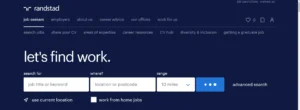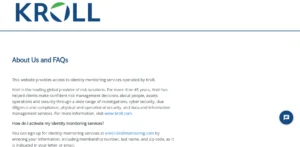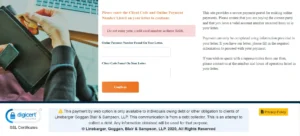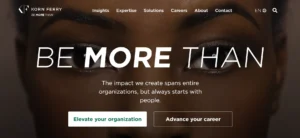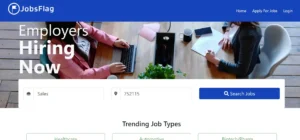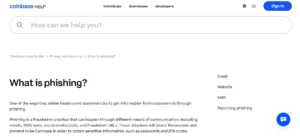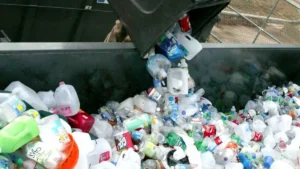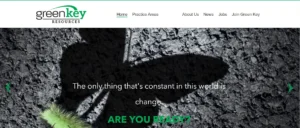Are you getting a strange text message about unpaid tolls? It might not be from the DMV at all. Scammers are using fear tactics to trick drivers into giving away personal information or money. These fake messages often look like official notices, making it hard to tell what’s real and what’s not.
The DMV unpaid toll scam has been on the rise across the country. People receive urgent texts claiming they owe money for toll fees and must pay right away to avoid fines or legal trouble. But here’s the truth: these messages are not legitimate. They come from fraudsters trying to steal your data or money through phishing links.
This blog post will help you understand how this scam works, why it’s dangerous, and most importantly, how to protect yourself. We’ll cover real examples, tips for spotting fake messages, and steps to take if you’ve already fallen victim. You’ll also learn how to report these scams and stay safe in the future.
Key Takeaways
- The DMV unpaid toll scam is a text message fraud that targets drivers across the U.S.
- These messages claim you have unpaid toll bills and threaten penalties if you don’t act fast.
- The DMV does not send unsolicited texts asking for toll payments.
- Clicking on links in these texts can lead to identity theft, malware, or financial loss.
- Always verify any unexpected message by visiting the official DMV website or calling their office directly.
- Report suspicious messages to the Federal Trade Commission (FTC) and local authorities.
- Use two-factor authentication and strong passwords to protect your online accounts.
- Educate friends and family about the signs of smishing and phishing scams.
- Never share personal or banking details over text or email.
- Stay alert and check for updates from trusted government sources about current scams.
What Is the DMV Unpaid Toll Scam?
The DMV unpaid toll scam is a type of smishing—or SMS phishing—that tricks people into believing they owe money for unpaid tolls. These fraudulent texts appear to come from the Department of Motor Vehicles (DMV) or other transportation agencies. They often include alarming language like “urgent payment required” or “face legal action.”
Victims receive messages stating they missed paying a toll fee and must settle the balance immediately. The goal is to create panic so users click on a link without thinking. Once clicked, the link may install malware, redirect to a fake website, or ask for sensitive information like Social Security numbers or credit card details.
These scams are cleverly designed to mimic real DMV notices. Some even use logos, official fonts, and realistic sender names to gain trust. However, genuine DMV offices do not contact residents via text to demand payments for tolls. Understanding this key point helps users avoid falling into the trap.
It’s important to remember that no government agency sends unsolicited texts demanding immediate payment. If you receive one, treat it with suspicion and double-check the source before taking any action.
How Does This Scam Work?
The DMV unpaid toll scam starts with a text message sent to your phone. The message claims you have an overdue toll charge and must pay it quickly to avoid fines or license suspension. It usually includes a link labeled “Pay Now” or “View Notice.” When users click the link, they’re taken to a fake website that looks like an official DMV or toll service page.
On this site, victims are asked to enter personal information such as their driver’s license number, address, and sometimes even credit card details. In some cases, clicking the link downloads harmful software onto the phone, which can steal passwords or track browsing activity.
These scams rely heavily on urgency and fear. They make recipients believe they’re facing serious consequences if they don’t act fast. Scammers count on people reacting without verifying the message’s authenticity. That’s why it’s crucial to slow down and think before clicking any links in unsolicited texts.
Always remember: legitimate government agencies will never ask for payment through text messages. If you’re unsure, go directly to the official DMV website or call their customer service line to confirm whether there’s a real issue.
Why Are Scammers Targeting Toll Payments?
Toll payments are a common part of driving in many states. People who use highways, bridges, or tunnels often get charged automatically based on their vehicle’s license plate or transponder. Because of this, messages about unpaid tolls seem believable. Scammers know this and use it to their advantage.
Another reason toll scams are popular is because they work well with text messaging. Most drivers use electronic toll systems, and many receive real notifications from toll services. This makes it easier for fake messages to blend in with genuine ones. A person who recently used a toll road might assume the message is valid.
Also, the threat of legal action or license suspension adds pressure. Many people want to resolve issues quickly to avoid trouble. Scammers exploit this behavior by making their messages urgent and official-looking.
Lastly, text-based scams are cheap and easy for criminals to launch. They can send thousands of messages at once and only need a few victims to fall for the trick. That’s why toll payment scams continue to spread across the country.
Who Is Affected by This Scam?
The DMV unpaid toll scam affects drivers across the United States. While some states see more reports than others, no region is completely safe. People in California, Virginia, Oregon, and Hawaii have reported receiving these fake texts, even though some areas don’t have toll roads at all.
Anyone with a mobile phone and a registered vehicle could be targeted. Older adults and those unfamiliar with digital threats may be more vulnerable. However, even tech-savvy individuals can fall victim if they’re caught off guard or in a hurry.
This scam doesn’t just affect individual drivers. Families and small business owners who use company vehicles may also receive these messages. Scammers cast a wide net hoping someone will respond.
Even if you haven’t received a suspicious message yet, it’s good to stay informed. Knowing the signs helps you protect yourself and warn others. Everyone should be cautious when dealing with unexpected texts related to vehicle records or toll charges.
What Do the Fake Messages Look Like?
Real DMV unpaid toll scam messages often follow a similar pattern. They start with a subject line like “Unpaid Toll Fee,” “Notice of Delinquent Payment,” or “Your Vehicle Has Outstanding Charges.” The body of the text usually includes a warning about legal consequences if the debt isn’t paid soon.
Some messages include links labeled “Click Here to Pay” or “Settle Your Balance.” Others ask recipients to reply with a keyword like “YES” or “PAY” to confirm the debt. These actions can trigger malware downloads or lead to phishing websites designed to collect personal data.
The language used in these texts is meant to cause alarm. Phrases like “Immediate Action Required” or “Avoid Suspension of Your License” push people to act without thinking. The formatting may include official-looking headers, logos, or even correct spelling and grammar to appear trustworthy.
However, real DMV communications never come through unsolicited text messages. If you ever receive something like this, do not click the link or reply to the sender. Instead, verify the message through official channels before taking any action.
How Can You Spot a Fake DMV Text?
Spotting a fake DMV text requires attention to detail. First, check the sender’s phone number. Real DMV messages usually come from verified short codes or official email addresses, not random phone numbers. If the number looks suspicious or doesn’t match known DMV contacts, it’s likely a scam.
Next, read the message carefully. Legitimate DMV notices rarely use aggressive language like “Urgent!” or “Face Legal Action!” They also won’t ask for immediate payment through a text link. Official communication typically includes detailed instructions on how to handle the issue through proper channels.
Look for spelling errors, odd formatting, or mismatched branding. Scammers often copy real DMV content but make small mistakes that give them away. Also, hover over any links (if possible) to see where they really lead. If the URL looks off or redirects to a non-government website, do not click it.
Remember, the DMV will never ask for personal or financial information through unsolicited texts. Always double-check by visiting the official DMV website or calling their office directly.
What Should You Do If You Get One of These Texts?
If you receive a suspicious text about unpaid tolls, the first thing to do is stay calm. Don’t click any links or reply to the message. Deleting the text is the safest option, especially if you’re unsure of its origin.
Next, report the message to the appropriate authorities. You can forward the text to 7726 (SPAM), a free service provided by major wireless carriers to report spam messages. You can also file a complaint with the Federal Trade Commission (FTC) through their website at ftc.gov/complaint.
If the message appears to come from the DMV, contact your local DMV office directly to confirm whether there’s a real issue. Use the phone number listed on the official DMV website, not the one in the text.
Finally, let others know about the scam. Share the message with friends, family, or coworkers so they can stay alert. Spreading awareness helps prevent more people from falling victim to the same trick.
How Can You Protect Yourself from Smishing Scams?
Protecting yourself from smishing scams starts with being cautious about every message you receive. Always question the source before clicking any links or responding to requests for personal information.
One of the best defenses is to enable two-factor authentication (2FA) on all your online accounts. Even if scammers get your password, 2FA adds an extra layer of security that makes it harder for them to access your data.
Use strong, unique passwords for each account. Avoid reusing passwords across multiple sites. Consider using a password manager to generate and store secure login credentials.
Install reputable mobile security apps that can detect and block phishing attempts. These apps scan links and attachments for malicious content before you open them.
Educate yourself and others about common scam tactics. The more you know, the less likely you are to fall for a trick. Regularly check official DMV and FTC websites for updates on current scams and prevention tips.
Have There Been Reports of This Scam in Other States?
Yes, the DMV unpaid toll scam is not limited to one state or region. Reports have surfaced across the country, including California, Virginia, Oregon, and even Hawaii. In fact, some of the strongest warnings have come from officials in these states.
California DMV issued alerts after seeing a spike in fake toll notices sent to drivers. Virginia DMV warned residents about urgent text messages claiming to be from the department. Officials in Oregon and Hawaii also confirmed similar patterns, noting that scammers were impersonating both DMV and toll agencies.
Interestingly, some areas targeted by this scam don’t even have toll roads. For example, Hawaii officials pointed out that the islands don’t have toll systems, yet residents still received these fake messages. This shows how widespread and deceptive the scam has become.
The federal government has also taken notice. The Federal Trade Commission and other agencies have issued nationwide warnings urging people to stay alert and avoid clicking suspicious links in texts.
What Steps Are Being Taken to Stop This Scam?
Government agencies and law enforcement are working hard to combat the DMV unpaid toll scam. The Federal Trade Commission (FTC) and state DMVs have issued public warnings to raise awareness. They advise citizens to ignore suspicious messages and report them immediately.
Telecom companies are also stepping up efforts. Major carriers offer tools to block spam messages and allow users to report scams easily. Some networks now flag or filter messages from known scam numbers before they reach users’ phones.
Law enforcement agencies are investigating the sources behind these scams. Though tracking down cybercriminals is challenging, increased reporting helps build stronger cases against fraudsters. Each reported incident gives investigators more data to identify patterns and shut down scam operations.
Additionally, cybersecurity experts recommend using mobile protection apps that scan for phishing links and malicious software. These tools add another layer of defense against smishing attacks.
Public education remains a key strategy. By sharing information about how these scams work, officials hope to reduce the number of victims. Staying informed is one of the best ways to avoid becoming the next target.
Final Thoughts on the DMV Unpaid Toll Scam
The DMV unpaid toll scam is a growing threat that uses fear and urgency to trick drivers into giving away personal and financial information. These fake texts look official but are designed to steal data or install malware on your device.
Understanding how this scam works is the first step in protecting yourself. Always question unsolicited messages, especially those demanding immediate action. Remember, the DMV does not send texts asking for toll payments.
Reporting suspicious messages helps stop scammers and warns others. Forward texts to 7726, file a report with the FTC, and contact your local DMV to verify any claims.
Stay informed and educate those around you. The more people know about these scams, the safer everyone becomes. Don’t let fear drive your decisions—always double-check before clicking any link or sharing sensitive details.
FAQs
What should I do if I clicked a link in a scam text?
Delete the message immediately and run a full virus scan on your phone. If you entered any personal details, change your passwords and monitor your accounts for suspicious activity.
How can I report a fake DMV text?
You can report the message to the FTC at ftc.gov/complaint or forward the text to 7726. You can also notify your local DMV office directly.
Will the DMV ever text me about unpaid tolls?
No. The DMV does not send unsolicited text messages asking for toll payments. All official DMV communication comes through verified channels like mail or their official website.
Are these scams only happening in certain states?
No. Reports of this scam have come from multiple states across the U.S., including California, Virginia, Oregon, and Hawaii.
Can clicking a scam link damage my phone?
Yes. Some links install malware that steals data or tracks your online activity. Always avoid clicking unknown links in texts or emails.


